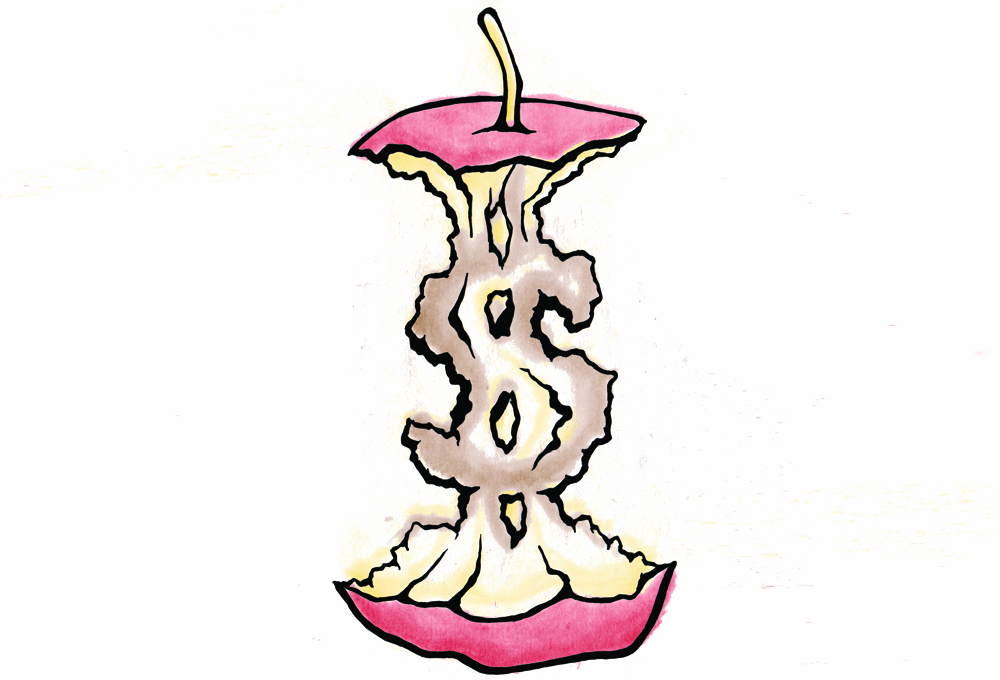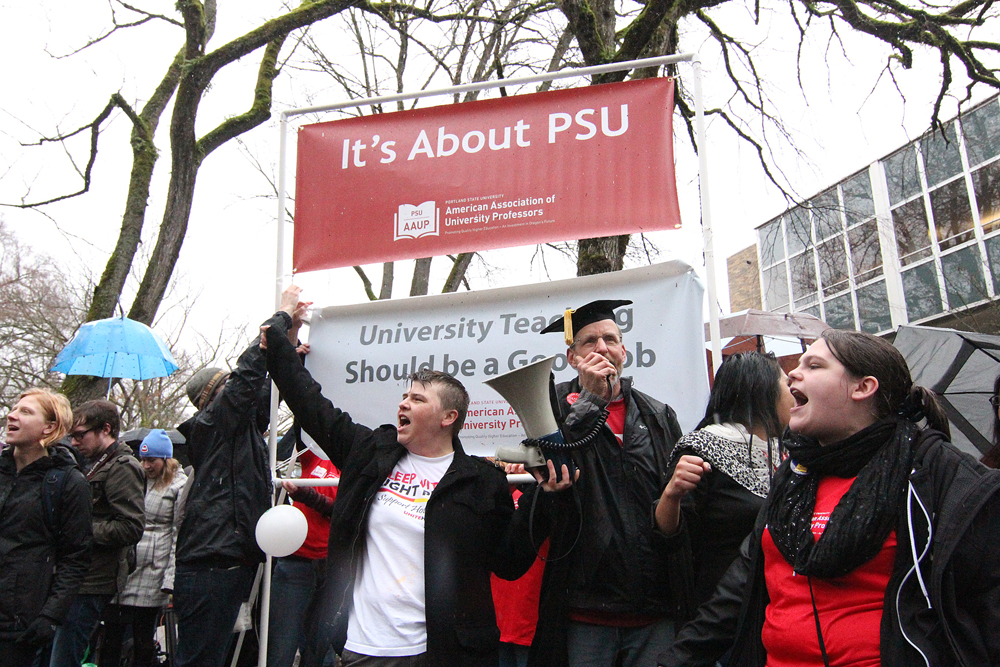Portland State boasts 1,764 research and institutional faculty members. In recent years the university has tremendously expanded the number of degree programs it offers. PSU currently offers 209 different degrees that include bachelor’s, master’s and doctoral programs. Over 20,000 students are educated here each year.
The recent threat of a strike and the fundamental arguments over how PSU allots and spends its budget are shedding more light and scrutiny on how much professors are being compensated, and how much they should be earning.
In my own experience with professors at PSU, most of them work extremely hard and devote themselves to educating and helping students for little financial gain. “Don’t worry about giving me your money—almost none of your tuition goes toward paying me,” one of my biology professors once told me.
This revelation surprised me until I looked into the payment differences between professors and administrators. I discovered that in most states, the highest paid employees at universities are, unsurprisingly, deans and chancellors, and surprisingly, sports coaches.
It is a sign of deeply skewed priorities that the people who accumulate and spread knowledge, and who work hard to fulfill the most basic purpose of universities, earn so little and enjoy so little job security. While there is immense interest in obtaining more benefits for faculty, members of the American Association of University Professors are also hoping for a quick and satisfying resolution so that they can focus on working and helping students.
“It is a shame that contract negotiations have reached an impasse. I was a graduate student at UC Berkeley during a graduate student strike, and it was incredibly disruptive,” said professor Melissa Appleyard of the School of Business in an email. “Because of the importance of education, hopefully resolution will arrive soon so we can all get back to focusing on the success of our students and the health of the university community.”
It is slowly becoming more acknowledged that across numerous universities and research centers, funds for academic research are scarce and are only getting scarcer. The Washington Post in 2012 said, “Traditional academic jobs are scarcer than ever…the supply of scientists has grown far faster than the number of academic positions.” There are distressing signs that in many academic fields, funding and job availability have not kept up with the number of people demanding funds and positions.
Closer to home, the Portland Tribune reported last June that “Oregon will lose about $15 million in research grants this year due to sequestration…continued sequestration will cost Oregon about $30 million in federal research funding per year.” The federal budget sequester has jeopardized the careers and projects of many scientists and professors working at PSU and other institutions.
With academic opportunities and money for research drying up and disappearing as the numbers of people seeking such work rises, universities across the nation—including PSU—are facing a bleak future.
The PSU professors I’ve spoken with who are part of current labor negotiations are unanimous in their high esteem for the student body, and are also enthusiastic about the city and university they work in. “The students at PSU never cease to amaze me with their balance of school, work and life,” said Appleyard. “PSU is so fortunate to be in the middle of such a livable and dynamic city. Portland feels more nimble than Silicon Valley or Seattle.”
Some professors note that as the years have passed, more emphasis is being placed on fostering an environment where maximizing profits is most important. “Administrators now tend to come in from outside. In my assessment, today’s administrators at PSU could best be described as ‘careerists,’” said John Hall, professor of economics and international studies.
“My take is that many of us faculty members seek to carry on and operate with noble principles, but in an environment being eroded by an administration infected with business principles. Our conflict seems first and foremost a conflict in values.”
Academia has never been renowned for being a terribly well-paying profession—it’s definitely not like working in Silicon Valley. However, the growing number of people possessing advanced degrees and looking for academic positions, coupled with the shrinking accessibility of research jobs, minuscule salaries and growing skepticism toward university education, are worsening the already knotty situation.
One of the most perceptive, if not prominent, observers of these changes is the blog 100 Reasons, which so far has compiled 92 posts detailing why attending graduate school and seeking a research career are enormous mistakes. Among the reasons listed is the shockingly low pay faculty receive at almost all universities, with non-tenure professors earning approximately $40,000 a year. This is consistent with what PSU instructors make, if not generous.
Not only are salaries for professors without the benefits of tenure extremely low, they also aren’t increasing much each year. A 2011 Oregonian article revealed that salaries nationwide climbed only 1.4 percent, which proved to be “the lowest year-to-year change in the 50 years of the annual survey.” Professors are truly living up to being what Case Western Reserve University law professor Erik Jensen called the “worst-dressed middle-class occupational group in America.”
To add insult to injury, just as jobs and remuneration for faculty are worsening at PSU and other universities, administrative employees and athletic officials are enjoying more and more job openings and consistent increases in salary each year. PSU-AAUP observes that tenured full professor salaries increased by only six percent in the last decade whereas, according to sources in the Portland Mercury, “The average administrator’s salary has gone up substantially. The provost’s salary shot up 46 percent. For vice provosts it was 43 percent. For vice presidents it was around 29 percent.”
A massive spike in the number of administrative jobs at PSU has also been observed in recent years, and there is even speculation that further cuts to the academic budget will remove more classes and delay the progress of students. Such an event occurred last summer when approximately 70 to 80 classes were removed from the curriculum just weeks before classes were scheduled to begin.
The walkout organized by students and professors on Feb. 27 emphasized the current problems faced by stagnant wages and increasingly unaffordable tuition that appears to be worth less and less. The strikers are working with AAUP to advocate for increases in the salaries of professors to keep up with inflations affecting prices, lengthening the contracts of fixed-term faculty members and making it easier for professors to live and work in satisfactory conditions.
If a strike does occur during the spring term, it will be the first at PSU in about 20 years. A strike would disrupt the graduation plans of some students and undoubtedly affect the careers of many students and professors, but it would certainly succeed in drawing attention to the plight of students struggling to pay for education, and professors who are hard-pressed to find projects and jobs.
PSU’s professors have devoted years of labor working toward their degrees only to endure frighteningly low levels of pay. The principal focus of the strike organizers is how to protect the rights and ensure the welfare of teachers so that PSU functions by prioritizing the interests of those who contribute the most to universities. These are namely the students and professors who contribute money and labor to making PSU what it is.





